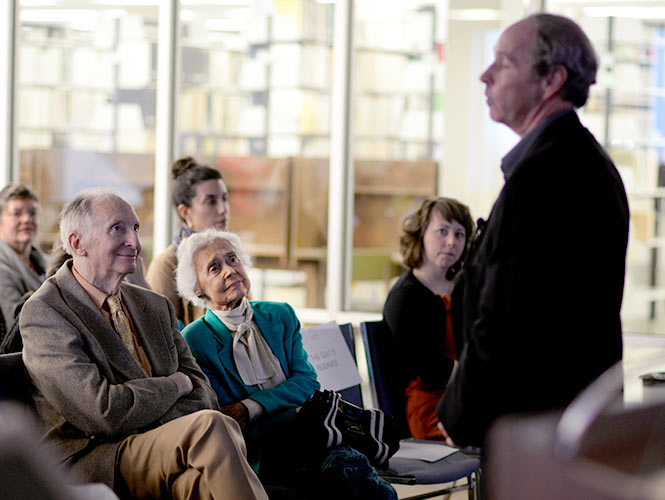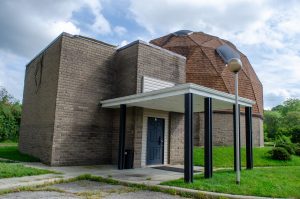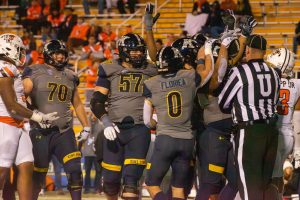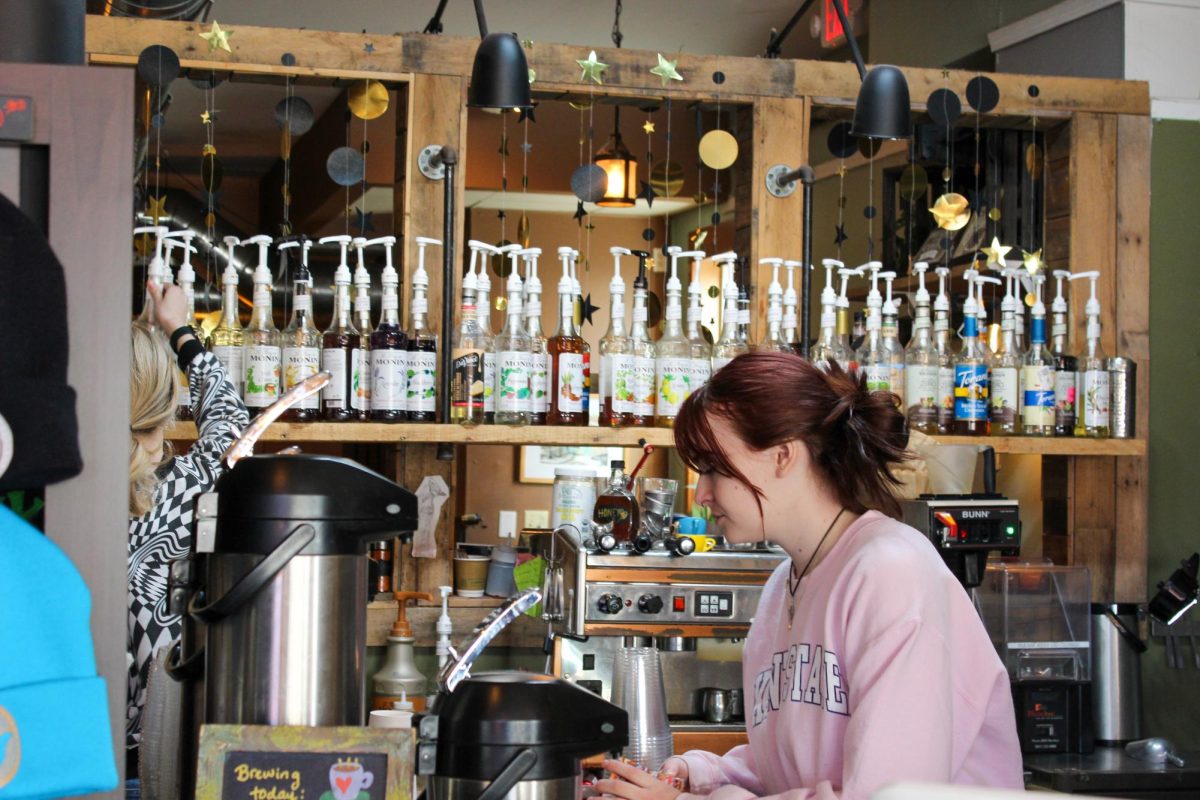Guest speaker discusses Lindbergh kidnapping
Albert Borowitz and his wife Joan Mortimer listen to Dr. Thomas Doherty as he presents a lecture about the media coverage on the 1932 Lindbergh baby kidnapping case Thursday, April 17, 2014. Albert Borowitz created the true crime exhibit on display on the 12th floor of the library in honor of the 25th Anniversary Borowitz Lecture.
April 17, 2014
Students, staff, faculty and members of the Kent community gathered on the 10th floor of the University Library for the 25th Anniversary Borowitz Lecture. Thomas Doherty, a professor of American studies at Brandeis University in Massachusetts, presented on the media coverage of the kidnapping and murder of the Lindbergh baby in 1932.
“My angle on the situation wasn’t so much, ‘Did he really do it?’ but on how it was a pivotal moment in the history of American media,” Doherty said. “It’s the first moment where the three pillars of modern media — newspaper, radio and phones — came together to cover a story about the kidnapping of the baby of the most famous man in America, Charles Lindbergh.”
The Lindbergh baby was only 20 months old when he was kidnapped and murdered by German carpenter Bruno Hauptmann. His father was the famed pilot Charles Lindbergh, who flew from New York to France in a 33-hour trans-Atlantic flight.
Doherty, who teaches a class called “True Crime and American Culture” at Brandeis University, gave the presentation Thursday in honor of the 25th anniversary of the Borowitz Crime Collection at the library.
Doherty said he discovered the case while looking over files from the 1930s and said he was hooked instantly.
“The case is all over the 1930s, and when you’re doing the research, you just can’t stop and look away,” he said.
Doherty said he thinks it’s the emotional appeal crime stories have that attracts fans to them.
“I hope that not just with Lindbergh but with any true-crime story that the reason that we go to it is a nice humanistic reason that we identify with the victims and not the perpetrator,” Doherty said. “It makes us more respectful of the impact that crime has on people.”
Cara Gilgenbach, head of the Special Collections and Archives department, said she expects the true-crime exhibit on the 12th floor of the library to become more popular after the presentation.
“After the lecture, we had about six or seven people come up to the 12th floor and visit the display, and we had a few visitors earlier in the day,” she said. “I think with the end of the semester coming up that we’re going to get a lot more students who have been meaning to come up before they graduate or leave for the summer.”
The true-crime exhibit will remain on display in the University Library until June.
Contact Christopher Woods at [email protected].















